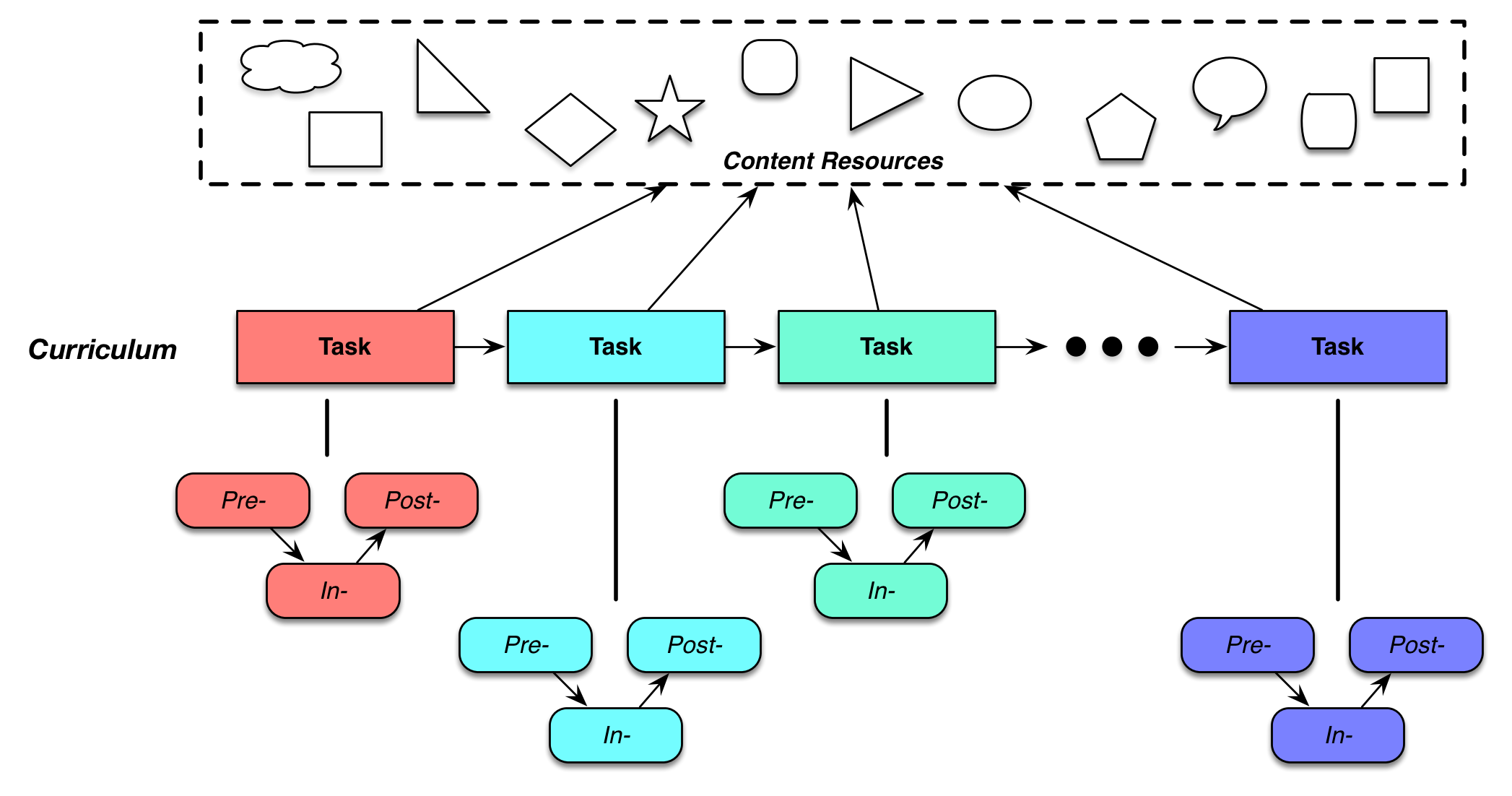In addition to yesterday’s post about pedagogy, I also mentioned the need to get deeper on curriculum as well. The notion is that we need to redefine curriculum as a way to get away from a content base, and start moving to an activity base.
 The focus is on creating a curriculum that has tasks at it’s core, and these tasks are tasks like the learner will be expected to be performing in the world. These tasks can be viewed as competencies that, if the learner possesses them, there is evidence that they are prepared to perform.
The focus is on creating a curriculum that has tasks at it’s core, and these tasks are tasks like the learner will be expected to be performing in the world. These tasks can be viewed as competencies that, if the learner possesses them, there is evidence that they are prepared to perform.
The goal is to choose tasks, with the final task likely being chosen first and working backwards (as in Understanding By Design) to determine what needs to be done. From each chosen ‘task’ will be a suite of activities that comprise the pre-, in-, and post-class activities, but here we are focusing on the overall curriculum before we get into the individual pedagogy.
Note that the content is subsequently chosen to support successful execution of the tasks, and is not presented to the learner but is, instead, made available to them at the time of the task. The goal is to have them process the content in service of accomplishing the task, an approach more consonant with our cognitive architecture. We’re more likely to remember information we’ve had to process rather than information we’ve just been presented with. Information that a learner can recite is unlikely to be activated at a relevant time (“inert knowledge) unless it’s been applied, and the focus should be on the application, not the recitation.
Again, this turns out to be very much the approach of Roger Schank of Socratic Arts as well, but emerged from my own thoughts and frustrations before I found out about the Story-Centered Curricula. Of course, I referenced the Goal-Based Scenarios in my book on learning (game) design, but I hadn’t been aware of his curricular processes at the time of this or my Reimagining rant pointed to above.
There’re more details required to fully flesh out the process here. I reckon it’d be easier to do with an employer than faculty, but even with faculty, I reckon if you can get more than one in a room, focus on decisions, and help them understand the power of activity-focused learning, it’ll work. Fingers crossed ;).
Reading your thoughts above, I wonder if you’re aware of Cathy Moore’s “Action Mapping” approach to designing elearning. What you shared runs congruent with the action mapping process – start with a business goal, what are the actions that must be completed by the learner/employee to reach that goal, what are activities that simulate those actions (in order for the learner to practice the skills/competency) and what is the required information (content) that the learners needs to complete the activity. You might find her blog about this process interesting and supportive in your efforts to influence other faculty to follow suit. Here’s a sample and the “introduction” to action mapping from her blog: http://blog.cathy-moore.com/2008/05/be-an-elearning-action-hero/
Also, this blog post might be of interest to you as well: http://blog.cathy-moore.com/2012/01/how-action-mapping-can-change-your-design-process/
In addition, you have succinctly stated the reason I have been exposed to an enormous amount of “learning,” but am unable to manifest what I supposedly learned — inert knowledge presented with little or no application. As a result of observing this, I’m very selective nowadays of what I do expose myself to and make a more concerted effort to apply as soon as possible and as frequently as possible afterwards.
I’m looking forward to reading more of your blogs on this topic, especially about how you go about encouraging others to break out of the old learning paradigm.
Victoria, do know Cathy Moore’s Action Mapping, and a fan. This is a slight superset, covering more topics (it’s for more formal education), but lots of overlap.
Hallelujah Clark :-)